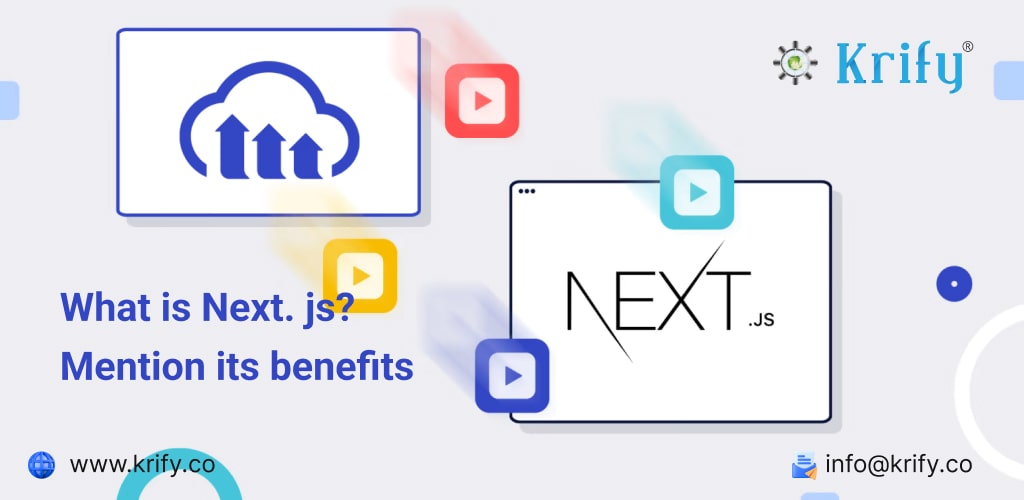NEXT.js is a popular JavaScript framework for building server-rendered React applications. It is built on top of React and Node.js, and it provides a set of features that make it easy to build scalable, high-performance web applications. In this blog post, we will explore what NEXT.js is, its features, and the benefits of using it for your web development projects.
What is NEXT.js?
NEXT.js is a framework that makes it easy to build server-rendered React applications. It provides a set of features that make it easy to build scalable, high-performance web applications. A server-rendered application is one that is rendered on the server before it is sent to the client. This means that the client receives a fully-rendered HTML page, rather than a JavaScript-based application that needs to be rendered on the client. Server-rendered applications provide a number of benefits, including improved performance, better SEO, and better accessibility.
Features of NEXT. js
Some of the key features of NEXT.js include:
1. Automatic code splitting:
NEXT.js automatically splits your code into smaller chunks, so that only the code that is needed for a particular page is loaded. This improves the performance of your application by reducing the amount of code that needs to be loaded.
2. Server-rendering:
NEXT.js provides a built-in server-rendering solution, which makes it easy to build server-rendered React applications.
3. Routing:
NEXT.js provides a built-in routing solution, which makes it easy to handle client-side routing in your application.
4. Hot Module Replacement:
NEXT.js provides a built-in hot module replacement solution, which makes it easy to update your application without the need to refresh the page.
5. Static Site Generation:
NEXT.js also provides a built-in solution for static site generation which means you can pre-render your application and serve it as a static site.
Benefits of NEXT.js
Now that we have a better understanding of what NEXT.js is and its features, let’s explore the benefits of using it for your web development projects.
1. Performance:
One of the main benefits of using NEXT.js is that it improves the performance of your web application. Because NEXT.js uses server-rendering and code-splitting, it reduces the amount of code that needs to be loaded by the client. This means that your application will load faster and be more responsive, which can improve the user experience.
2. Improves SEO:
Another benefit of using NEXT.js is that it improves the SEO of your web application. Server-rendered applications are easier for search engines to index, which means that your application will be more likely to appear in search results. This can drive more traffic to your application and improve your business results.
3. Improves Accessibility:
NEXT.js also improves the accessibility of your web application. Server-rendered applications are more accessible to users with disabilities, as they can be easily read by screen readers. Additionally, the framework provides a set of features that can help you to ensure that your application is accessible to all users. The benefits of NEXT.js extend to enhancing the overall accessibility of your web application, ensuring that it can be enjoyed by a wider range of users.
4. Easy to use:
NEXT.js also makes it easy to build scalable, high-performance web applications. The framework provides a set of features that make it easy to handle client-side routing, server rendering, and code-splitting. This means that you can build an application that can handle a large number of users and a large amount of data, without sacrificing performance.
5. Active Community:
Another benefit of using NEXT.js is that it has a large and active community. The framework is open-source and has a large and active community of developers. This means that there are a lot of resources available, such as tutorials, documentation, and example code, that can help you to learn and use NEXT.js. Additionally, the community is constantly working on improving the framework and adding new features, which means that you can benefit from the latest advancements in web development.
6. Implementation is easy:
NEXT.js also makes it easy to implement modern web development practices. The framework supports modern JavaScript features such as async/await, and it also supports the latest web technologies such as Webpack, Babel and ES modules. This means that you can use the latest and greatest web development tools and practices with NEXT.js, which can help you to build better and more efficient web applications.
Conclusion:
In conclusion, NEXT.js is a popular JavaScript framework for building server-rendered React applications. It provides a set of features that make it easy to build scalable, high-performance web applications. If you’re looking to build a web application that is fast, efficient, and easy to maintain, NEXT.js is a great option to consider.
At Krify, our highly skilled professionals are well-versed with the latest technologies and trends and keep themselves up to date with upcoming developments. If you are looking to develop a web application using Next.Js, you have arrived on the right page. Contact us today to discuss your project requirement.




